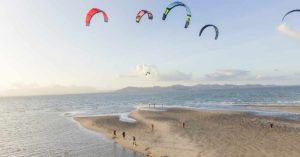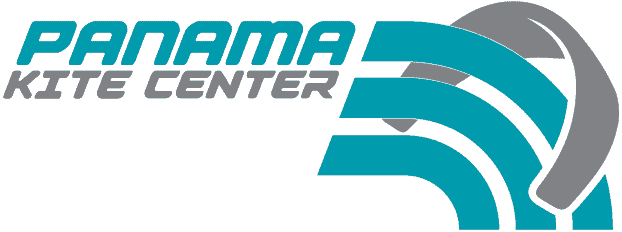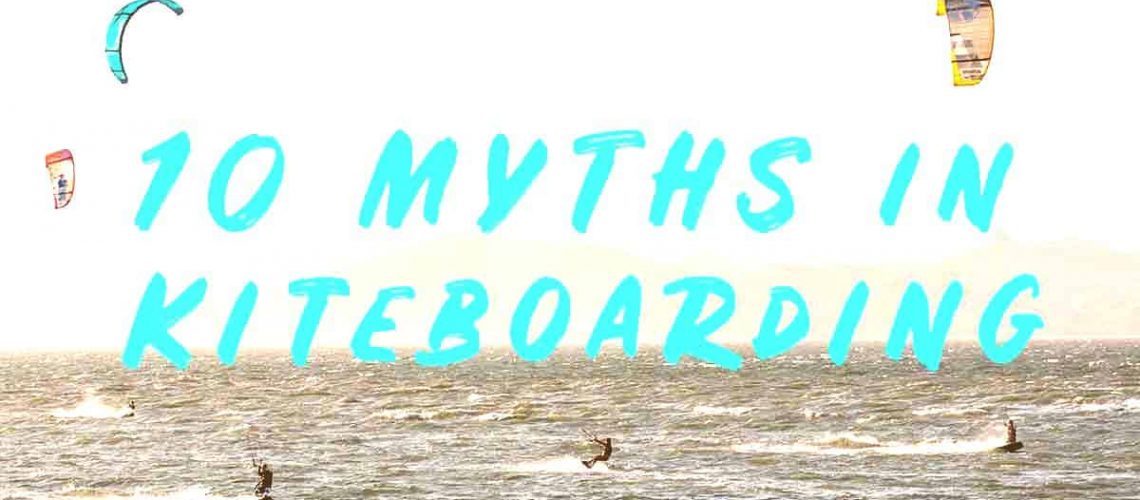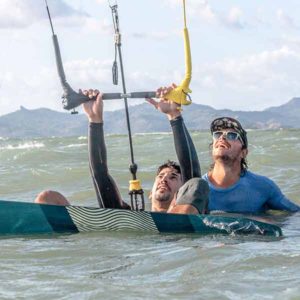When you are about to start out with kiteboarding or are still a beginner, some things may no be obvious to you and you may encounter some of the myths out there about the sport. Read on to find out about the most common misconceptions about kiteboarding
#1 You have to be strong to kiteboard
You don’t need a big biceps for kiteboarding. This sport that can be learned by virtually anyone who is comfortable swimming in water. From 7-year-old kids, to lightweight girls, and even elderly people over 70.
You don’t have to be ripped to get started. You wear a harness while kiteboarding, which is essential for taking the kite’s power off your arms. This is very different from wakeboarding and hence allows you to kite for more than 60 minutes straight without a lot of effort.
#2 I am too light or too heavy for kiteboarding
Again, kiteboarding does not discriminate.
The difference between a 50kg rider and a 150kg rider is that the heavier rider will need a bigger kite and bigger board to get moving at the same wind speed. In terms of the lightest riders, usually kids, your child should have 35-40kg before starting a course. Kids can start practicing with a trainer kite with a playful approach before starting to fly “real” inflated kites.
#3 Kiteboarding is a dangerous sport
Another widespread kiteboarding myth is that it is dangerous. Equipment has developed and the sport can be practiced very safely nowadays. Yet important, it all depends on the precautions you take before and on the water, and on whether you learned all the safety rules and procedures during your lessons.
Very important: take lessons!
- Don’t kite by yourself
- Know the spot and its conditions
- Don’t go out in offshore settings
- Don’t kite during a storm or with lightning
- Know the rules of way, especially in a crowded spot
- Practice your quick release on your kite every now and then
- Revisit the self-rescue techniques
- Choose the size of your kite wisely
When in doubt, don’t go out!
#4 You can learn how to kiteboard by yourself
If you set up a kite on the beach and started flying it without lessons, you will most likely be a danger to yourself and other people on the beach. Kiteboarding is a sport you must learn a school and a course similar to scuba diving and skydiving. In a kiteboarding center the complete course will take 8-12h and consists more or less of the following steps:
- Wind theory
- Kite setup
- Safety & Self Rescue
- Kite control & relaunch
- Body Drag
- Getting up on the board
- Riding, braking, turning
Check out our package options for kiteboarding lessons here.
#5 Kiteboarding takes long to learn
You most likely won’t become an independent kiteboarder in a day. Yet on the other hand it takes only 8-12h to the essential skills for independence. Assuming you do two 2h sessions per day, you could be going solo on your third or fourth day.
As with many things it takes dedication and consistency to learn the sport. The feeling of gliding over the water is unique and once you feel the happiness of kiteboarding yourself, you may be hooked for life.

Group of Kiters waiting for Wind
#6 I have done a board sport – kiting will be easy
Another myth about kiteboarding is that a lot of people believe because they have practiced a board sport like surfing, skateboarding or snowboarding they have a head start when it comes to kiteboarding.
Kiteboarding is really 80% kite flying skills and 20% board skills. A kiteboarding course focuses on kite control for the first 4-5h. If you don’t control the kite you won’t even be able to demonstrate your board skills and find yourself flying head first in the water.
Once you are comfortable flying the kite in any situation, being a good “boarder” does help some, but keep in mind that in kiting balance is different, as there is a constant lateral vertical pull from the kite which is different to any other board sport.
#7 Kiteboarding is expensive
True it is more expensive than soccer or surfing. Yet compared to sports like wakeboarding where you have to have a boat or pay the cable park or compared to skiing where you have to pay the lift to get you up on the mountain, kiteboarding, once you did your lesson and bought your gear, is free. The wind is our element, and nature allows us to play around with it free of charge.
Nonetheless, expect to pay $500-600 for your kite lessons and around $1500 – $3000 for your kite equipment.
#8 You can only kiteboard in the ocean
Kiteboarding can be done anywhere you have wind and water, and some people even kiteboard on land or snow. Had I been aware of this myth myself, I could have learned kiteboarding much earlier.
go
Difference between kiteboarding and kitesurfing
Kiteboarders around the world kite in salt and sweet water. Lakes like Lago Calima in Colombia, The Great Lakes in the northern USA, or rivers like the Columbia River in Oregon are beautiful for kiteboarding. You would be surprised when you look around where people blow up their kites and hit the water.
This is also why it’s so amazing to travel with kiteboarding.
Go out and explore the worlds’ best kite spots.
#9 Kiteboarding and Kitesurfing are the same
Strictly speaking kiteboarding is done on a twin tip board with both sides looking the same. Yo go left or right. Kitesurfing on the other hand, differs in a way that it is usually practiced on the open ocean with waves, combining the kite with a surfboard-style board which is one directional.
Additionally, during the last few years you may have seen videos of people flying above the water on a board that looks like a magic carpet. This is called kite foiling and allows you to go at faster speeds with less wind due to minimal friction of the board with the water. Only a small set of wings similar to those of an airplane are under the water and the rider balances 50-90cm above the surface.
#10 Beginners should only buy used gear
Saving money on equipment may sound like a good idea. Especially if you’re not 100% sure how often you will practice the sport. Yet, buying a used kite is like buying a used car. You never know what you get and some of the wear and tear is not visible. You better make sure you know what you buy and give it a decent inspection before you close the deal. Stretched lines in your bar may make the kite difficult to fly for beginners, some kites may have repaired bladders you won’t be able to see. Kites older than 4 years will usually start losing air unless you repair all of the valves and the connector tubes. Don’t buy C-shaped kites as a beginner, either. They will make it difficult for you to progress as they are designed for advanced kiters that unhook.
If you buy used, buy from someone you can trust, a friend that knows the history of the kite or your local kite center in Panama. Reach out to us at Panama Kite Center to guide you in your purchase or check up on a used kite you may want to buy. We also offer guarantees on our used and new products and have all the replacement items for the brands in stock.
Buying a new kite, on the other hand, will guarantee you have the latest technology, and usually the safest product on the market. New good quality kites, that match your riding style will also allow you to progress faster and leave you hassle free for the first 3-4 years.
Check out Core Kites and Cabrinha for one of the industry’s finest equipments.


